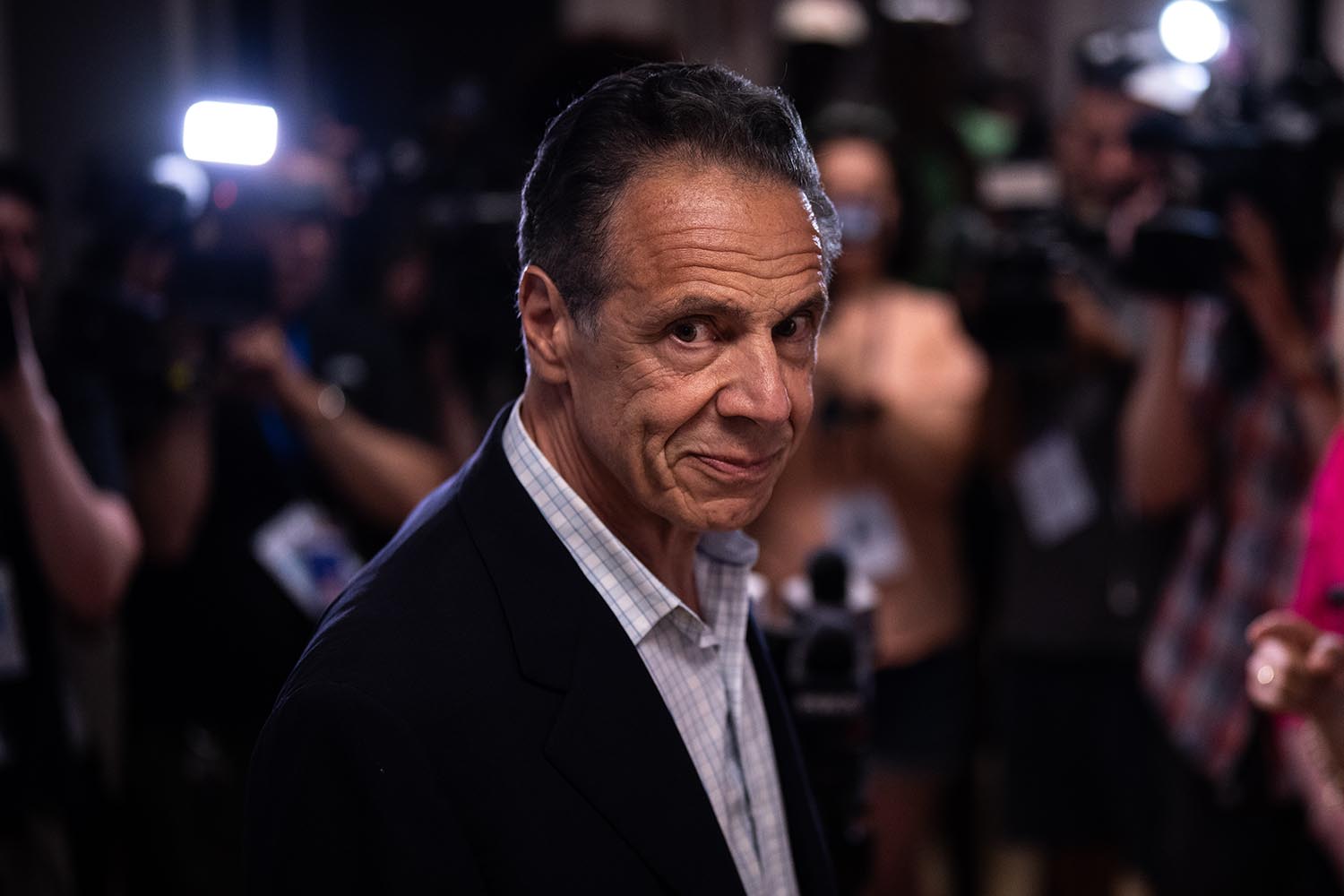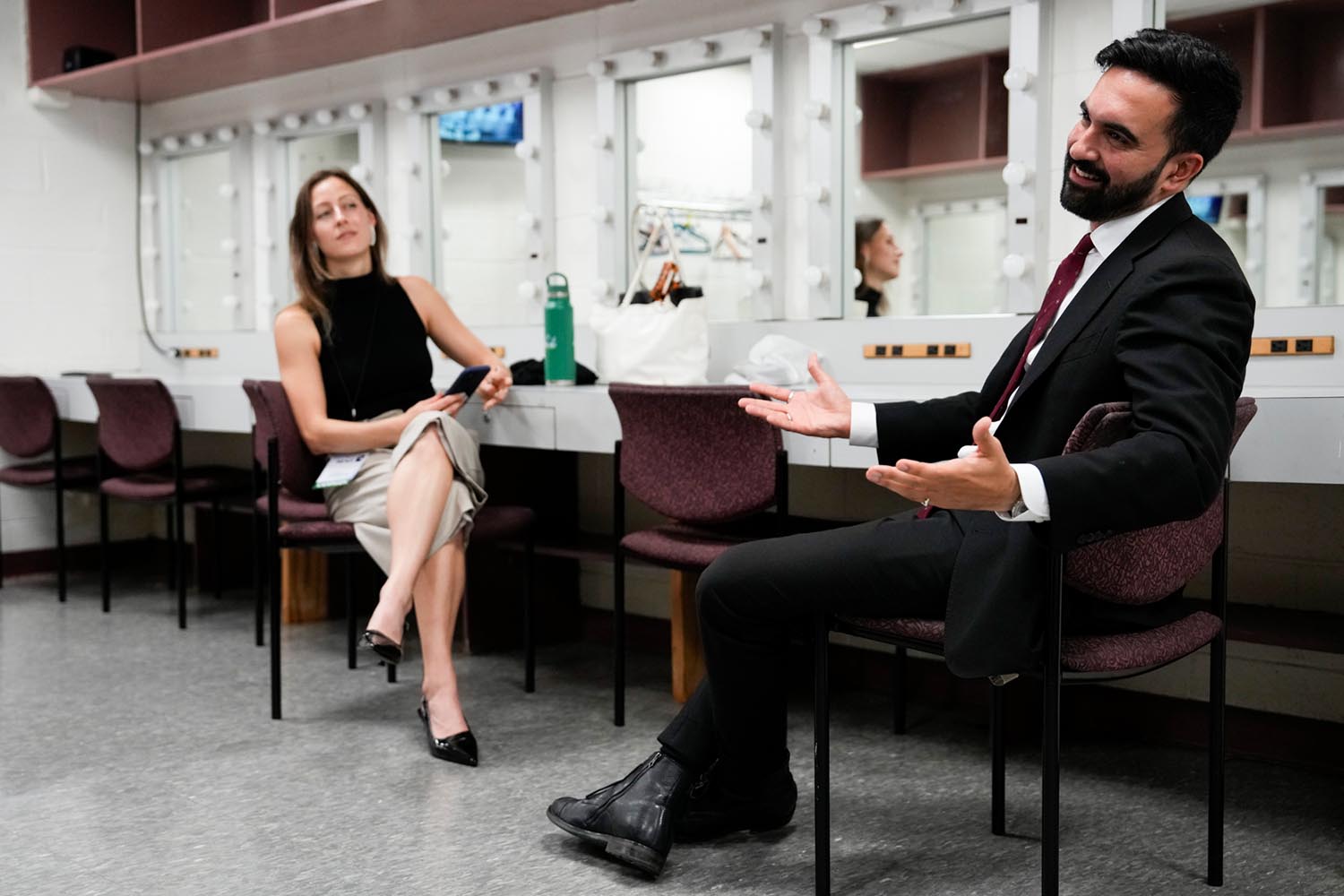Zohran Mamdani is a 33-year-old TikTok-friendly socialist who believes in rent control and free childcare, and has been accused by Jewish groups of defending the slogan “globalise the intifada”.
He could also be the next mayor of New York City. Mamdani is a wild card gaining fast in the polls in an election that lays bare the paralysis of US Democrats in the age of Donald Trump and the intergenerational feud the party faces in the shadow of last year’s bitter presidential defeat.
Mamdani, with his high-profile Democratic endorsements from Alexandria Ocasio-Cortez and Bernie Sanders, has clearly touched a national political nerve
The outcome of Tuesday’s primary will decide the party’s nomination for the election in November and voters have a crowded field of 11 candidates to choose from. Mamdani’s main opposition is former state governor Andrew Cuomo, a Super Pac-funded, union-endorsed scion of a political dynasty with a reputation tarnished by sexual harassment allegations.
Mamdani, on the other hand, is a young migrant whose out-of-state financial contributions are outpacing his competitors by four to one. Endorsed by New York congresswoman Alexandria Ocasio-Cortez and Vermont senator Bernie Sanders, Mamdani has clearly touched a national political nerve.
Last week, he revealed he had been subject to Islamophobic death threats. He also drew the ire of some Jewish organisations for saying that the phrase “globalise the intifada” captured “a desperate desire for equality and equal rights in standing up for Palestinian human rights”.
He later course-corrected by acknowledging that anti-Jewish prejudice was “a real issue in our city”.
For his part Cuomo, 67, wants to hire more police, make subways safer and build more housing, and has secured the endorsement of former mayor and billionaire Mike Bloomberg – along with $8.3m in donations.
In 2021, Cuomo was forced from the New York governor’s office after allegations made against him by multiple women, all of which he denies. After a broader reassessment of the #MeToo era, he is now more apt to portray himself as a victim. “That which doesn’t kill you makes you stronger,” he said recently.
In third place is Brad Lander, the city’s comptroller, who last week became the latest elected official to be manhandled and arrested in the US. Lander was briefly detained by immigration and customs agents while he was attending an immigration court hearing for a New Yorker he was trying to help.
Mamdani and Lander have cross-endorsed each other – making the most of a ranked-choice voting system that lets voters pick and rank multiple candidates – in an attempt to ensure Cuomo does not win.

Andrew Cuomo was forced from the New York governor’s office in 2021 after multiple women made allegations against him, all of which he denies
In a lukewarm endorsement of Cuomo, the New York Times said Mamdani’s agenda, which includes reducing the cost of living in the city and improving public transport, was “uniquely unsuited to the city’s challenges”.
One Democratic strategist said the editorial was emblematic of the Democrats’ broader dysfunction five months into the second Trump term. “It’s clear that we in ‘the establishment’ and our organs will cling, however suicidally, to a version of power we’ve already lost rather than contend with new blood and new ideas,” said Amit Singh Bagga to the City & State media organisation.
Another party veteran said a feud within the Democrats is working itself out in New York. “Young people, highly educated, who stand to inherit the greatest transfer of wealth in the history of the world when their parents die… are deciding if they are the future of American politics,” said Hank Sheinkopf. “And New York is ground zero for it.”
New York, he said, is going through a demographic and political transition, with a growing Arab and African population, a static Black population, a declining Jewish population and an Asian population replacing Irish-Americans in the outer boroughs.
“The question is: do New Yorkers want stability or do they want something new? The Democratic party is in such trouble that the only place it can go to stabilise itself is the deep left.”
Stephen Louis, who has advised five mayoral administrations, and is now an adjunct professor of law at New York Law school, said the city is not typically a national barometer. The direction of the Democrats may be hard to discern from Tuesday’s results. “There’s a heavy overlay of issues regarding the personalities of the leading candidates that has become a very strong factor in this race, so it’s not just the traditional moderate v s progressive dynamic,” Louis said. “I’m surprised that the more traditional-seeming candidates, like Adrienne Adams and Brad Lander, who have come up through the ranks of New York City politics, have really not taken off.”
Analysts often describe New York’s races as dysfunctional, prone to producing idiosyncratic mayors that befit the nature of the city. “The city elects unusual people because it’s a polyglot where the only constant is change and the chaos is unstoppable,” Sheinkopf said.
Photographs by Vincent Alban/the New York Times/AP and Adam Gray/Bloomberg/Getty
